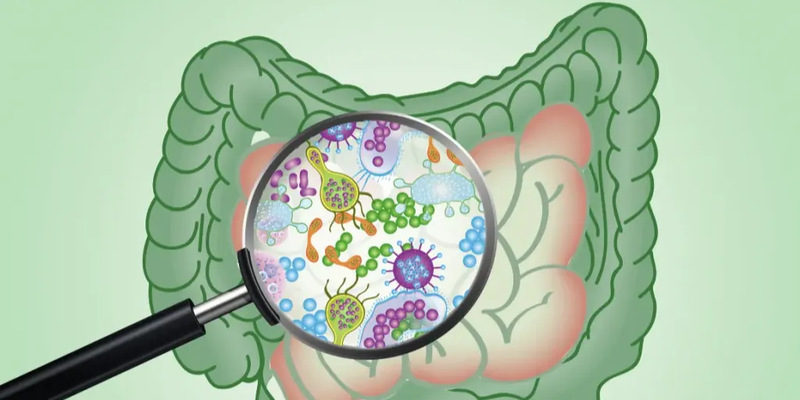Causes of Gout and Its Relationship with Immobility
Gout produces intense pain, which significantly limits a person's mobility. When blood contains excessive uric acid, needle-like crystals develop within joints. Gout patients who do not receive proper treatment will develop persistent damage that results in immobility and wheelchair dependence. A thorough understanding of gout origins and its movement interference, combined with appropriate treatment options, helps effectively control this condition.

What Leads to Gout?
The main factor leading to gout development is excessive uric acid accumulation in the human body. Uric acid exists as waste material that needs proper elimination through urine channels. Too much uric acid production and insufficient urine excretion result in uric acid crystals forming inside joints. The crystallized needles embedded in joints lead to severe pain and swelling with inflammatory reactions.
The way people make and eliminate uric acid guides the development of gout since specific individuals either create too much uric acid or cannot get rid of it fast enough. High-purine food consumption, especially red meat and seafood lead to elevated uric acid levels in the body. Various elements, such as lack of water in the body, energy issues, and particular drug treatments, add to gout formation.
How Gout Impacts Mobility
Gout's deformations create the most critical health complication because they limit movement. Joints affected by inflammation, together with swelling, create barriers to walking while standing and performing any kind of regular activity. Gout targets the big toe as its main site, but it may additionally affect the ankles, knees, and fingers, therefore complicating mobility.
Tophi develops when patients suffer from chronic gout because uric acid deposits form hard masses that remain under skin tissue. These deposits make joints more painful and restrict joint movement flexibility. Untreated gout develops into permanent joint destruction that elevates the chances of becoming immobile. The severe intensity of pain, in some cases, forces patients to need wheelchair assistance for their mobility.
The Relationship of Gout with Immobility
Gout, together with immobility, forms an ongoing detrimental pattern. Gout pain triggers a natural human instinct to stay inactive, resulting in prolonged resting. Limited activity both slows blood flow and intensifies swelling levels in the body. Furthermore, weight gain from immobility is an additional risk element for gout development.
Regular gout attacks teach individuals to reduce their physical activity, which leads to their increased need for walking aids, including canes and wheelchairs. People who stay inactive for longer periods face increased chances of muscle wasting and joint stiffness, which complicates recovery efforts.
Early Symptoms and Warning Signs of Gout
Knowledge about the first warning signals of gout helps people avoid life-threatening acute attacks. The beginning stage of gout tends to appear quickly as a severe form of joint pain that normally starts within the evening hours. The location of gout shows signs of redness, while swelling occurs alongside temperature changes. Most people notice tingling sensations together with stiffness that led to a complete gout attack.
Gout develops into extended and repeated attacks that extend across multiple joints of the body. People who obtain prompt medical care for gout will stop the development of long-lasting harm and restricted movement.
Treatment for Gout: Managing Pain and Preventing Flares
Patients who suffer from gout need to take medications along with modifying their lifestyle to find relief. Doctors typically provide nonsteroidal anti-inflammatory drugs (NSAIDs) to their patients as pain relievers and inflammation-controlling medications. Corticosteroids or colchicine are administered to patients with severe gout symptoms to reduce swelling.
Allopurinol and febuxostat act as chronic treatment drugs to minimize uric acid levels and prevent additional gout attacks. Medical care for patients with long-term gout requires therapies that dissolve existing uric acid accumulations.
Lifestyle changes are equally important. Hydration, weight control, and purine avoidance have proven effective in reducing the chances of gout attacks. People who exercise moderately improve their joint functionality and avoid stiffness, which decreases the risk of becoming immobile.
Can Gout Be Prevented?
While gout has genetic factors, specific steps can lower the risk of developing or worsening the condition. Avoiding sugary drinks can help regulate uric acid levels. A diet rich in vegetables, whole grains, and lean proteins can also make a difference.
Regular exercise plays a key role in preventing gout-related immobility. Low-impact activities like swimming, walking, and stretching can keep the joints flexible without putting excessive strain on them. Additionally, managing other health conditions, such as diabetes or high blood pressure, can prevent gout from becoming more severe.

Long-Term Effects of Untreated Gout
If gout remains unmanaged, it can lead to serious complications. Chronic gout may result in joint deformities, making movement increasingly difficult. Over time, the persistent presence of uric acid crystals can cause irreversible damage to the bones and cartilage, leading to chronic pain and disability.
Moreover, untreated gout raises the risk of kidney stones and kidney disease. The same uric acid crystals that accumulate in the joints can also form in the kidneys, potentially leading to severe renal complications. This highlights the importance of early diagnosis and proper treatment to prevent further health risks.
When to Seek Medical Help
You need to consult a doctor when you experience ongoing joint pain, swelling, or redness. Gout requires proper medical treatment because untreated cases develop permanent joint damage and create persistent disability. Healthcare providers employ blood testing and imaging methods to diagnose gout, after which they establish suitable treatment options.
Gout becomes a major problem when people neglect its treatment because the consequences include immobility and reduced quality of life. Knowledge of gout origins and its impact on mobility, along with proper gout treatment methods, will protect patients against harmful outcomes. The management of this painful condition gets better when people get medical help early and make needed lifestyle adjustments.










